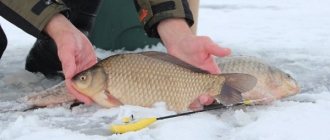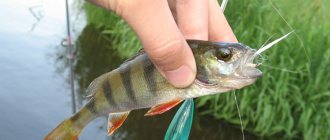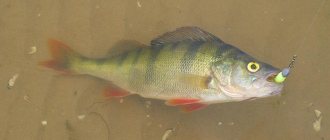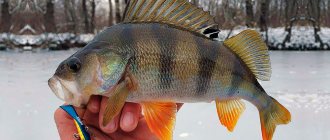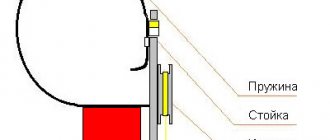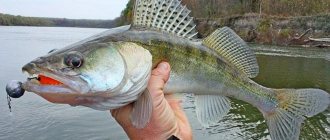For catching perch with jigs in the fall to be successful, you shouldn’t rely on a massive meal of the predator. Of course, you can get to the distribution of the striped primate in the autumn. But it is better to rely on knowledge of the reservoir and the habits of the predator, the correct search tactics and fishing techniques. In this article we will look at how to catch perch in the fall with a jig. Let's look at the fishing features for this time of year.
What is microjig
By the word microjig, anglers understand both the method of spinning fishing and the equipment that is used for such fishing.
As a method of spinning fishing, microjig is fishing with light-weight jig baits and ultralight tackle. Microjig baits are silicone baits up to 2-2.5 inches (5-6 cm) long and weighing no more than 3-4 grams.
Microjig is based on classic jig, but at the same time it is very different from it, not only in the light weight of the baits used, but also in the wide variety of bait movements and animations.
In microjig, the balance of the gear plays an important role, so an angler who wants to devote himself to microjig fishing will have to purchase a special microjig set of tackle for himself.
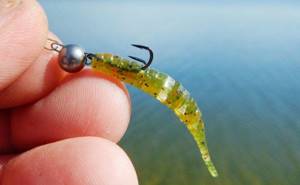
Microjig allows you to specifically catch many types of predatory and peaceful fish. A spinner fishing with a microjig rarely feels the resistance of a large trophy fish at the other end of the line, but thanks to the use of ultra-light tackle with light baits, he feels a large number of bright and unforgettable bites.
Microjig is the most sporting type of spinning fishing; it is often used by spinning athletes at competitions of various levels.
Among spinning anglers fishing with microjigs, the Catch & Release fishing principle is more common than among other categories of fishermen.
The best microjig baits for perch and installation
To catch perch, a large arsenal of baits is used - vibrator sticks, twisters, worms and slugs, foam rubber, silicone caterpillars, creatures, crustaceans and other krakozyabrs.
We would advise you to purchase a set of baits to start your journey in microjigging, which would have all the main options, rather than buying up half the store, especially since this is impossible and inadvisable.
The microjigit's wallet should contain baits of different colors, passivity/activity parameters, shape and size.
In most cases, perch prefers dark colors - motor oil, lox, dark brown tones with glitter. In muddy water - acidic, provocative colors. Sometimes you need to experiment and look for your own color.
If we talk about specific models, then the basic set of baits that we would recommend purchasing for microjigits starting to hunt for perch is as follows:
- Passive foam rubber - carrot . Good for the most passive perch in an active game created using a rod at minimum reel speed. The animation is active and varied.
- Reins Aji Ringer 1.5 inches . The ribbed bait in the shape of a worm is very popular among minibus fishermen. Good for a sports sailor.
- Reins Aji Meat . 1.8 inches . A good and working worm from Raines.
- Bait Breath - Needle RelFry 2" . Good in lox and chartreuse colors. The perch is simply in awe of her game. Very suitable for beginners, as it accepts any most chaotic game.
- Lucky John - King Leech 2 inches . A very working and, at the same time, budget worm from Lucky John. The closest possible behavior to a real worm. The downside is that it is short-lived, but this is the other side of the coin of a realistic game. Can be used in jig fishing with the lightest loads of 1-2 grams.
- Bait Breath Fishtail 2 inches . The game imitates the play of a wounded fish and behaves most realistically at the lightest weights.
- Fanatik Dagger 2.5 . A budget-priced product from Fanatic, but that doesn’t make it less catchy. It has a jumper in the middle of the body, which gives an intricate play on active animation. Loves pauses, leisurely movements and light stretches.
- Tsunekichi Worm 2" (copies of Select Tsunik and Kosadaka SLY Worm) is a well-known worm in microjigit circles. Working color sucker. It often helps to get away from zero on the most inhibited and passive perch.
- Imakatsu Javastick 1.2 inches (as well as cheaper copies with a similar shape from Kosadaka, Select, Crazy Fish and others). Something between a fry, a caterpillar and a leech. Consistently one of the best for perch in shallow water along and above overgrown vegetation. A very mobile tail is a threat to a perch. Dark violet is a very working color for perch in the spring. Animation - movements on the bottom almost in one place, double-triple tosses, classic and American steps.
- All kinds of active baits from Mance, Relax, Pantun 21, Lucky John, Keitech, Kasadaka, Fanatic and others. It is good to use active baits to explore a new body of water when there are active fish. It's faster and more effective than passive baits.
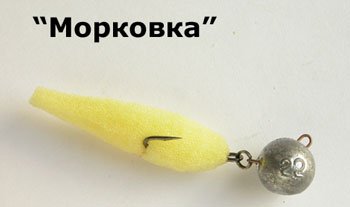
Foam rubber - carrot
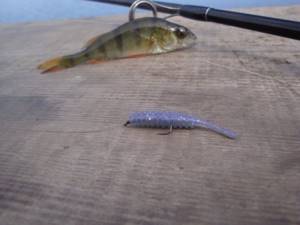
Reins Aji Ringer
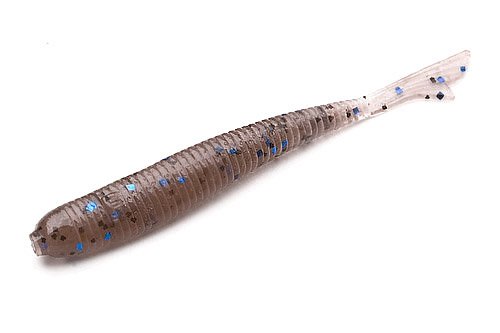
Bait Breath Fishtail

Lucky John King Leech
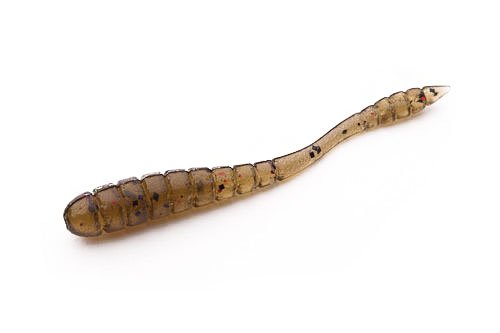
Sunekichi Worm
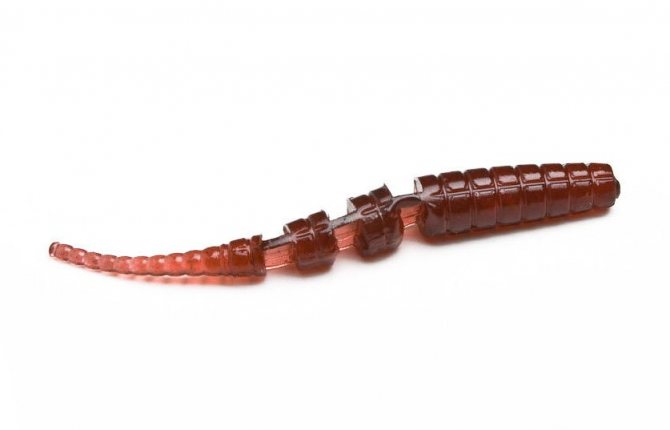
Imakatsu Javastick
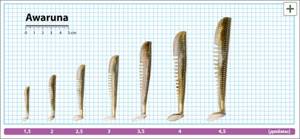
Pontoon 21 Awaruna
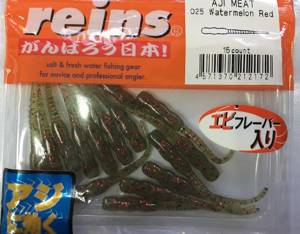
Don't get hung up on one type of bait and manufacturer. It’s worth trying different things, but not all at once, but little by little mastering new types and types of rippers, worms, slugs, twisters and other rubber “animals.” This will give not only the variability of your actions on the water, but also an incomparable, invaluable experience.
Installation of silicone baits for microjigs
Several options are used for rigging microjig baits for perch:
- Standard jig heads of various sizes and shapes.
- The equipment is hinged mounted on a regular single hook with a large eye, offset hooks of various shapes and double hooks.
It is worth choosing the right hook size and shape so that the installation looks organic and does not interfere with the play of the bait when retrieving.
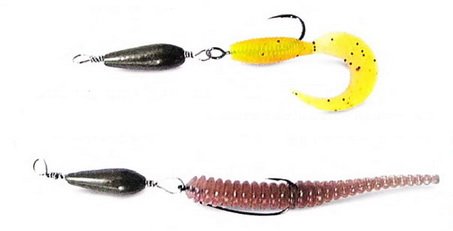
Our opinion is that the second installation method is more appropriate. It practically merges with the bait, but at the same time it almost does not interfere with detection. That’s why we prefer to use low-lift offsets for fast-moving slugs and worms.
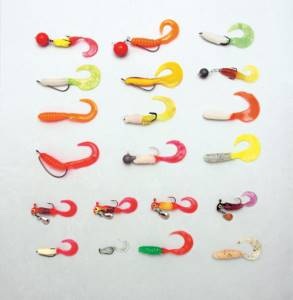
Various installations of perch twisters - on offset, hooks with a wide eye, double
For microjig, it is extremely important to use hooks from suitable series of proven manufacturers - Decoy, Ovner, Jamakatsu and others.

Small numbers owner 51639 slim offset are suitable for equipping slugs and worms
For hinged mounting, Cheburashka weights of nickel, tungsten, and lead are used. The most common weight is 1-4 grams. For equipment, you need to use offsets with a larger ear than usual so that the bait has the proper freedom of action.
How to choose the right offset hook for a silicone bait:
A jig can also be used as a jig head.
What is better - a swivel mount or a blind mount on a jig head? The question does not have a clear answer. Some say that it is not appropriate to use a joint in microjigging, as this results in a large number of overlaps when casting. The latter contradict and complement them - loading in the form of a jig will not provide the necessary freedom of play. In their own way, both are right and the choice is determined by the fishing conditions, the baits used and the temperament of the fisherman.
Details about installation methods:
Advantages of microjig
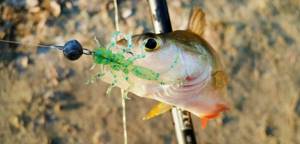
- Microjig allows you to catch fish, even if not so big, in reservoirs experiencing strong fishing pressure
- When fishing with a microjig, an angler has the opportunity to catch not only predatory, but also peaceful fish, which, in principle, cannot be caught with a spinning rod.
- Microjig shows high efficiency when catching fish in a passive state
- A spinner using a microjig has the opportunity to fish in urban or suburban waters
- The lightness of microjig tackle allows the angler to fish all day without feeling tired
Disadvantages of microjig
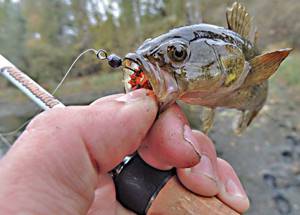
- For microjig fishing, you need a special set of gear, which is often quite expensive.
- Gear for microjig is distinguished by its elegance and high fragility; there is a high probability of breaking the rod
- When fishing with a microjig, there is always the possibility of a bite from a large fish, which will be very difficult to land on such elegant and fragile gear
What kind of fish can you catch with a microjig?
Most spinning anglers believe that when fishing with a microjig, they catch mostly small fish, and this is true, but in addition to them, they often come across quite worthy specimens. This is due to the fact that when a predatory fish is in a passive state, it does not react in any way to large baits, and small microjig baits provoke it to attack.
Perch
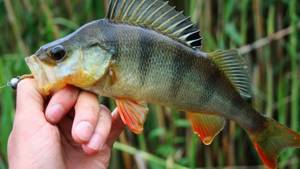
Perch is the main object of microjig fishing. Perch is found in almost any body of water, be it a lake, pond or river. In many bodies of water, smallmouth bass are the predominant fish.
Rotan
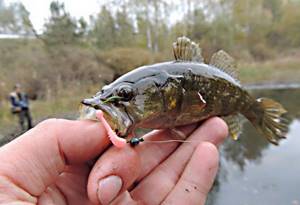
Rotan is caught very well using microjig, and fishing for rotan using microjig is carried out purposefully.
White fish

Various white fish: crucian carp, rudd, bream, roach, silver bream, ide, chub are well caught using microjigs. Some anglers catch whitefish on microjigs on purpose, but in most cases they are caught on microjigs as bycatch when fishing for perch.
Pike
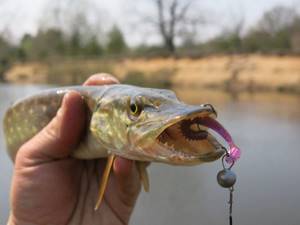
Pike is not specifically caught using a microjig; it is sometimes caught as bycatch when fishing for perch, but even more often, during perch fishing, it simply cuts the line with its sharp teeth. Therefore, if you are fishing in a reservoir where there is a high probability of catching pike, you will have to use a thin metal leash.
You may be interested in: Underwater fishing cameras
Zander
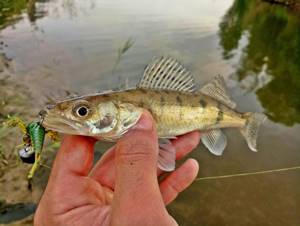
Pike perch, like pike, is not specially caught for microjigging, but it is caught as bycatch when it goes out to hunt for fry in shallow waters.
"Microjig" perch, its habits and habitats
The first thing you should understand is that the overwhelming majority of microjigs caught are grass perch, the so-called weed perch. The average size perch, and even more so the humpback fish, stays in other places and is caught on a microjig extremely rarely.
This is due to the fact that large perch stay in deeper places, and it is very difficult to work on them with ultra-light weights. Only in some cases, when the striped fish goes to shallower places - pits, shallow edges, in thickets of reeds for spawning grater, it can also be caught quite successfully using microjig baits. We will touch on this topic further in the text.
Based on this statement, it follows that the main hunting object of the microjigit is grassy, often schooling, perch.
Small and medium-sized perch often stay in schools, hunting in shallow and half-water at depths of 1-3 meters. Frequently moves and searches for food. It adheres to various underwater obstacles and often rages among water lilies and grass.
Tackle for microjig fishing
Spinning for microjig
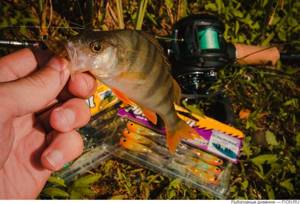
Spinning for microjig must meet the following requirements:
- Rod length:
2.2-2.3 meters - Test:
from 0.3 to 5-6 grams - Build:
Extra Fast - Rod tip:
Solid
Rock Fish class rods meet the requirements for spinning rods for microjigging. In Japan, rockfish, or mebaring, is the name given to catching small saltwater fish from the shore or pier. Rods designed for mebaru can have a glued (solid) or hollow (tabular) tip.
Spinning rods with a Solid tip have a glued tip made of monolithic carbon fiber.
A glued top is usually used to increase some parameter; it can be softer or more rigid. Most spinning rods for rock fishing with a Solid tip have a fast action. A spinning rod with such a tip is easy to break, so you should not exceed the upper test declared by the rod manufacturer. When fishing with a microjig with a rod with a Solid tip, it is convenient to control the movement of the bait along the tip of the rod. To make it easier to control the tip of the spinning rod, it is often made white.
A rod with a Solid tip allows you to fish with bait weighing from 0.5 grams.
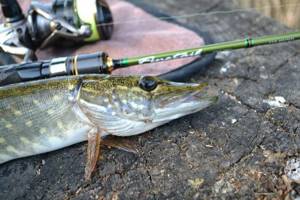
Spinning rods with a Tubular tip have a hollow rod tip, like all other spinning rods. Most of these rods have a super fast action. Spinning rods with a Tubular tip are more durable, so when fishing with them you can slightly exceed the top test declared by the manufacturer. Spinning rods with a Tubular tip are more versatile; they are suitable not only for microjigging, but also for other types of ultralight fishing. A rod with a Tubular tip allows you to fish with bait weighing at least 1 gram.
The most important quality of a spinning rod for microjigging is its sensitivity. Fishing with a spinning rod that does not have good sensitivity is difficult and uninteresting. A spinning rod for microjigging must have such sensitivity that the angler can feel the fall of a weight weighing 1.5 grams to the bottom of the reservoir, the bait touching underwater obstacles and the fish touching the bait. As a rule, the more expensive the rod, the more sensitive it is.
When choosing a spinning rod for microjigging, you should pay attention to the products of Korean and Japanese companies: Graphiteleader, Major Craft, Maximus and Zemex.
Coil
A microjig reel should be light in weight and have high-quality line winding.
The reel for microjig fishing should be light in weight and lay the line evenly.
The light weight of the reel is needed in order to properly balance the tackle. Microjig uses very light sticks, so if the reel is heavy, the imbalance of the gear will be very noticeable. The imbalance will not affect the casting distance, but fishing with such gear will be uncomfortable.
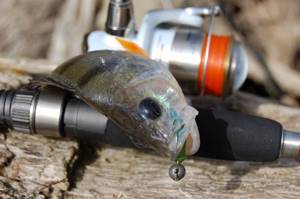
When fishing with microjig, the thinnest braided cords that exist are used, so even a small play in the reel, a small inaccuracy in the winding of the cord is enough to create an overlap, which turns into a beard on the next cast, and it is almost impossible to untangle a thin braided cord.
When fishing with bait weighing up to 1 gram, you can use a reel of size 1000, or even 500. When fishing with bait weighing more than 1 gram, you should use a reel of size 2000; such a reel will last you longer and will not cause problems.
For most anglers, the optimal size for microjigging will be Shimano and Daiwa reels in sizes 1500, 2000 and 2004.
If we talk about specific models of reels for microjigging, we should mention Shimano Elf, Shimano Nasci, Daiwa Legalis, Daiwa Revros reels. All of them are mid-budget models, weigh around 220 grams and cope well with winding thin braided cords.
fishing line
When fishing with a microjig, the high sensitivity of the gear plays an important role, so most people fish with a microjig with a braided cord. When choosing a cord for microjigging, you need to choose a cord with optimal thickness and strength.
You may be interested in: Spinning rod Graphiteleader Calzante
A braided line that is too thick does not provide a good casting distance and does not provide the required sensitivity. A cord that is too thin does not allow you to catch larger prey, and its use leads to a large number of breaks when hooking.
The optimal thickness of braided cord for microjig fishing is 0.09-0.10 mm or #0.3-0.4 according to the Japanese classification.
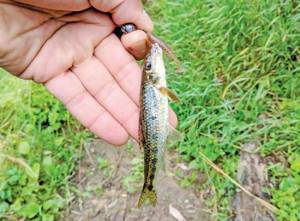
Beginner anglers can be recommended to use braided line with a diameter of 0.128 mm or #0.6 according to the Japanese classification. Fishing with a microjig bait weighing 1 gram with such a cord will not be entirely comfortable, but starting from a weight of 1.5 grams everything will be fine.
Experienced anglers who already have the skill of microjig fishing can try using thinner braided lines #0.15-0.2PE according to the Japanese classification.
The only option when using monofilament in microjig is justified is when fishing with bait weighing less than 1 gram.
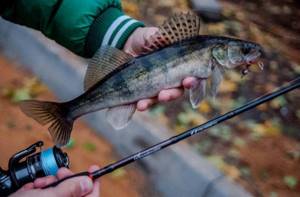
Recently, the new material Nanofil has been growing in popularity, although it has high cost and low wear resistance, although its wear resistance can be increased by using a fluorocarbon leader.
When purchasing a braided cord for microjigging, you should not buy the popular braided cords PowerPro, Fireline and others like them; the declared diameter of 0.06-0.10 mm on them does not correspond to reality.
When choosing and purchasing a cord, take into account the line capacity of the spool of your reel; buy a cord of such length that it fits on the spool with or without backing.
Leash
If there is a high probability of pike biting in the reservoir in which you are fishing, you should tie an ultra-thin metal leash.
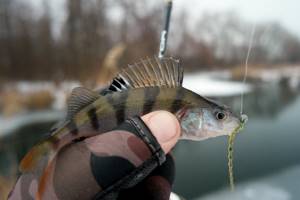
If the bottom of the body of water where you are fishing has abrasive properties, you should tie a fluorocarbon leash. Fluorocarbon leader is also used to reduce the visibility of the main line when the bite is reduced.
Cargo
Jig heads are used very rarely in microjig; fishing is mainly done with Cheburashka sinkers. Recently, collapsible Cheburashkas have become increasingly popular. The smallest fish are caught using winter jigs with pieces of edible rubber attached to them.

Cheburashka weights can be made of lead or tungsten. Tungsten Cheburashkas are more expensive than lead ones, but at the same time they have a higher specific gravity, so the size of a tungsten Cheburashka will be significantly smaller than a lead one, with the same weight. Tungsten Cheburashkas fly further and give greater sensitivity to the gear. When fish activity is low, replacing the Cheburashka from lead to tungsten often leads to a significant increase in biting.
Hooks
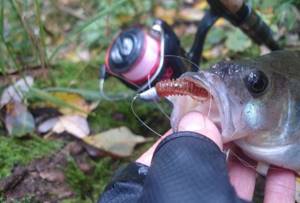
Most often, when fishing with microjig, ordinary single hooks with a large diameter eye are used. Sometimes, when there are a large number of hooks, small offset hooks are used, placing the silicone bait using a non-hooking method. Doubles are almost never used in microjig.
Lures
The main baits in microjig are twisters, vibrotails and silicone worms. The size of silicone baits is usually from 1 to 2.5 inches, that is, from 2.5 to 6.35 cm. Sometimes, instead of the whole bait, a piece of the twister body is placed on the hook. Perch bites much better on edible rubber, which is why it is mainly used. Microjig anglers use either real Japanese baits or their replicas.
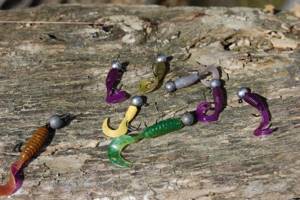
When fishing with a microjig with a collapsible Cheburashka, the angler selects the weight of the weight and the size of the hook and its type (single, offset), which are needed for specific fishing conditions and a certain size of bait.
When purchasing baits and hooks in a fishing store, you should select them so that they fit together.
It is difficult to say what size and color of bait is suitable for which fish; the angler must independently select these parameters for a specific body of water and specific fishing conditions.
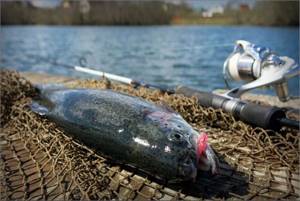
For beginners who like microjig fishing, we can recommend the relatively inexpensive and popular silicone lures Crazy Fish Nano Minnow and Crazy Fish Polaris.
You may be interested in: Spoons
It is better to store silicone baits in the package in which it was sold, so that the taste and smell of edible rubber do not wear out and the bait does not melt from contact with other rubber. In a separate box, distributed among the weights, you need to store pairs of Cheburashka weights and a hook.
Collection of micro jig tackle for catching perch
All microjig tackle is sophistication, perfect fit in all details and delicacy in all elements. Each element must be consistent with each other and not stray from the general outline.
Form
For perch, it makes sense to use rather “snotty” sticks of semi-parabolic and parabolic construction. Such forms are catchy, allow for accentuated animation, but at the same time do not break the delicate lips of small sailors when hooking.
For beginners, at first, we still recommend taking semi-parabolic rods or fast action rods - they are more understandable, although less functional during casting and during the retrieving process. But fast sticks do not fail at the top of the dough, unlike parabolic sticks.
At the same time, if you plan to fish with more or less heavy weights (within the framework of microjig, of course), then we recommend taking a form with a classic tabular tip, since sticks with an insert (solid) have a narrow application profile (mormyshing , nanojig) and fail at the top of the dough. It’s not for beginners, and the profile is really narrow. Does not allow the use of aggressive wiring; even a classic step cannot be “drawn” as normal.
The optimal test for a beginner is a microjigit for perch in the area of 1-5, 2-7 grams.
In most cases, a long stick is not needed for microjigging. The optimal length will be around 1.9-2.2 meters.
Well, weight is the most important factor in ultralight in general and in microjig in particular. The weight of flagship rods is 70-100 grams, no more.
The selection of quality fishing rods is huge. A detailed review will be at the link. Now we note that it is not necessary to immediately burn the budget on well-known flagships from Major Craft, Graphiteleader, Evergreen, St. Croix, but you should not go into outright China either. Favorite, Crazy Fish, Salmo, Berkley have a series of good, decent street forms aimed at perch fishing.
Let's choose the classics!
Coil
The basic rule is always a perfect balance with the form. The assembled form should maintain perfect balance with your finger placed under the front of the reel mount.
A microjig reel is a grinder 800-1500 according to Shimano. It is also possible to use sizes 2000 - 2500S. The reels themselves are of a regular size, but with a small spool (as indicated by the S symbol in the name). That is, this allows you to wind the thinnest fishing line or braid under the side on a regular reel. This option is suitable for those who already have a high-quality reel, but do not want to spend their budget on a new one. It’s worth buying an additional spool for your model and going to battle for the sailors!
You need reels with high-quality laying of the line under the side - without drops and waves. This will avoid dropping loops and increase casting distance. Also important is the softest and smoothest possible motion, which is present only in mid- and expensive-class spinning reels.
Also important is light weight and quality build throughout, from the line guide and roller to every bearing throughout.
We don’t recommend saving on the reel. If you hit the wrong mark in this case, then the whole hunt for UL fishing will disappear by itself. Shimano, Daiwa, Spro, Ryobi are good reels at a reasonable price, if you don’t go into the elite category.
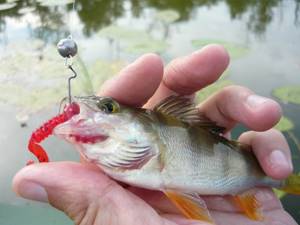
Cord/monoline
In microjig you can use monofilament line and braid. Each method has pros and cons. Read more about the conditions of use and advantages of monofilament and braid in our article.
A good cord for ultralight and microjig should be catchy, slippery and not noisy in the rings. This will cost the right amount of money. But if you are already collecting decent gear for microjigging, then saving is not the best option (remember the disadvantages?) - you should pay attention to the following manufacturers: YGK, Varivas, Sunline, Climax.
Good thread costs money, but it will last longer than cheap or even mid-range thread. Since UL uses the thinnest cords with a diameter of #0.2-#0.6, they wear out quickly. Here everyone chooses for themselves - buy more expensive, but for a long time, or cheaper and change every three fishing trips.
The specific choice is very difficult; even experienced athletes often change their opinion from season to season and from fishing to fishing. Here it is worth studying forums, reviews, videos on the Internet and gaining experience.
Microjig fishing seasons
Microjig fishing in spring

Immediately after the water bodies are cleared of ice, successful fishing for perch using microjigs begins, which lasts until the start of spawning. Microjig at this time surpasses all other fishing methods in terms of catchability. After the end of spawning, the activity of the perch is restored; the peak perch bite occurs at the end of spring.
Microjig fishing in summer
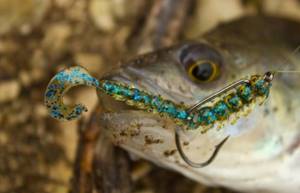
Perch is caught using microjig all summer, the peak of perch activity occurs in June, then there is a decline in fishing in the middle of summer, due to the heat, by August the activity of perch increases again. If perch activity decreases in mid-summer, you can reduce the size of the microjig bait and use slower types of retrieve.
In addition to perch, in the summer, when the water warms up, it makes sense to purposefully catch white fish on a microjig: crucian carp, bream, roach and silver bream. At this time of year, white fish are most active and fishing can bring a lot of pleasure to the angler.
Microjig fishing in autumn
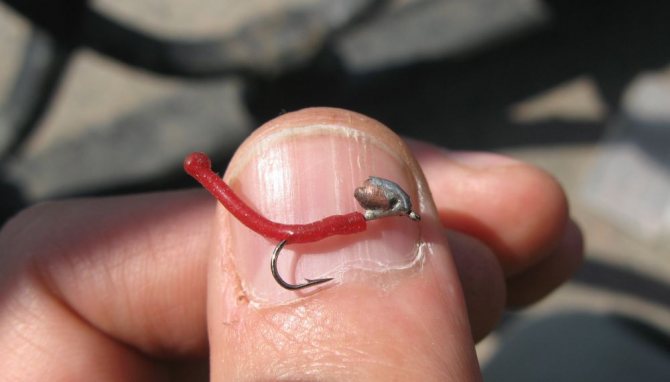
The best time for catching perch with a microjig in the fall is during the “Indian summer”. With the end of the “Indian summer”, the water temperature quickly drops and the perch follows the fry from shallow waters to deeper places, where catching them with a microjig becomes inconvenient. In autumn it is better to use larger baits and active types of wiring. As the water cools and the activity of the fish decreases, you should again switch to fishing with smaller baits and use slower types of retrieves.
Preparing gear
The success of the upcoming microjig fishing depends on the gear used. Since the method belongs to the ultralight class, the equipment must be light and delicate. High demands are placed on each element.
Rod
First of all, you will need to choose a rod that can accurately cast an ultra-light bait over a long distance, as well as cope with the jerks of large prey. The length of the spinning rod is determined by the conditions in which fishing is carried out.
If perch is caught in shallow water, near the shore or in a small body of water, it is better to take a model up to 1.8 meters long. Longer rods are uncomfortable to control. If you need to cast bait over distances of 30 meters, you should purchase a fishing rod 2.1-2.4 meters long.
The optimal test values are 5-7 grams. In the fall, when it is necessary to use heavier baits, a deviation from these indicators of up to 10 grams is allowed. For fishing in still water in shallow areas of the reservoir, it is better to take a rod with a weight of up to 4 grams.
The action of the blank for microjig fishing should be fast or ultra-fast. This will allow you to perform attractive animations with the bait and detect any bites from the striped robber.
The chosen rod should be sensitive and easy to use. If fishing is carried out with blind tackle, it will lose all its meaning, and the angler will not be able to determine the contact of the fish with the bait.
Coil
Considering the specifics of microjig, as a reel you need to choose a lightweight, inertia-free model that can quickly reel in the line with minimal probability of the loop being dropped when casting the equipment.
The design must also meet the following requirements:
- Compact dimensions and light weight.
- Good interaction with the rod.
- No extraneous sounds when rotating the handle.
- High sensitivity of the friction brake.
Experienced spinningists advise choosing high-quality reel models, even if they are expensive. Budget models are equipped with a plastic mechanism that is subject to wear and tear and cannot work with a thin cord.
Line or cord
For microjig fishing for perch, it is customary to use thin braid, up to 0.1 mm thick. Its advantage is increased strength and good aerodynamic properties. But the braided line is clearly visible in clear water, which can scare the fish.
You can avoid such consequences by using fluorocarbon fishing line, which serves as a leash. Its surface can refract light, becoming invisible to the perch. Due to this feature, manufacturers increase the diameter of the fishing line and make it resistant to resistance and tangling of the equipment.
When choosing a braid, you should give preference to Japanese models. They are characterized by high quality and can last up to two years.
Hooks
The best hook for microjigging is the offset version of the non-hooking type. It needs to be inserted under the tail of the artificial fish, leaving the tip peeking out. If fishing is carried out in difficult-to-reach conditions with an abundance of snags and water thickets, the hook can be hidden in the body of the bait. The hook is connected to the Cheburashka by a winding ring.
A sign of a good hook is self-hooking. The product should be sharp and invisible, recording any movement of the fish.
Jig head
The weight of the jig head is determined by the depth of the place where fishing will take place. In most cases, the “striped” fish is found at a depth of 1.5-4 meters, so the optimal weight is 2-7 grams. The installation method is also determined by the fishing conditions. Jig heads should not have the characteristic lead barb.
They are equipped with two methods:
- Classical.
- Non-snacking.
The second option is intended for problematic places among thickets of grass, where striped robbers like to live. Due to the absence of dismountable elements, the equipment provides attractive play and has an increased service life.
Leash
When choosing a leash, you need to give preference to light models that do not impair the attractive action of the bait. Steel options are ineffective, so it is better to take durable fluorocarbon. To prevent expensive equipment from breaking, it is necessary to use the correct installation method. It should not contain a large number of swivels and other unnecessary elements.
Selection of lures for catching perch with microjig
On the shelves of fishing stores there is a wide selection of artificial baits for microjig. This method of fishing continues to gain popularity, so leading manufacturers are actively expanding their range of miniature silicone products.
The classic bait is a small twister, but it is inferior in mobility to slugs, worms, vibrotails and crustaceans.
The manufacturing material used is “edible” rubber, which is impregnated with flavoring compounds and becomes more attractive to perch. The presence of a specific smell allows you to attract even a sluggish and passive predator. During periods of good activity, fish are caught with ordinary silicone - it costs less.
There are no restrictions in the choice of colors, because... The striped robber's preferences may vary. A universal option is light green or purple color. In cloudy weather, fish are interested in light shades.
Fishing technique
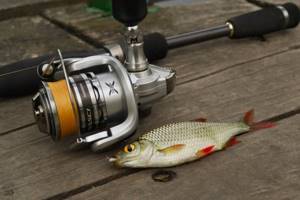
When fishing with a microjig, a wide variety of types of bait movements and animations are used:
- Step retrieve
is a classic jig step with the bait touching the bottom. Usually two or three turns are made with the reel handle, then a pause during which the bait lowers and touches the bottom. When fishing with step fishing, it is important to choose the right bait load for the specific depth of the fishing spot. - Retrieving by tossing bait
is a bit like step retrieving. Tossing is done like this: the bait is cast, they wait until the bait touches the bottom, the slack of the fishing line is reeled out, a light toss of the bait is made with the hand and the spinning blank, then a pause, the bait falls to the bottom, the slack of the fishing line is reeled out and a new toss is made. In addition to the single toss, there is a double toss of the bait, when the hand makes two movements, then the bait makes two jumps, the first from the bottom, the second already in the water column, after which the bait falls to the bottom. Tossing makes the bait play very bright, well provoking the predator to attack. - Uniform retrieving
consists of simply rotating the reel handle without stopping, while the bait moves evenly under water. You can diversify the uniform wiring with additional movements with the tip of the spinning rod. Uniform wiring shows good fishing results when the fish is in a passive state. - Wave-like wiring
is performed by moving the tip of the spinning rod as when twitching. Wave-like wiring is used for fishing in the water column, while preventing the bait from touching the bottom. Wiring can be used both when fishing in currents and when fishing in still water.

